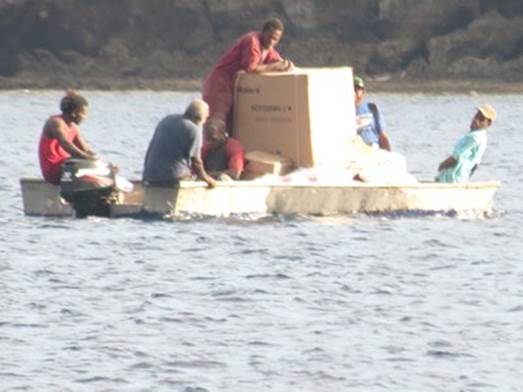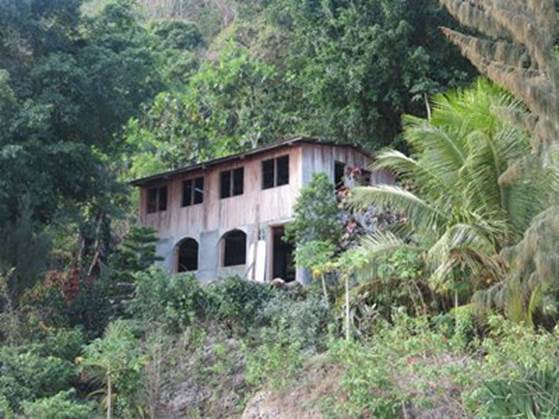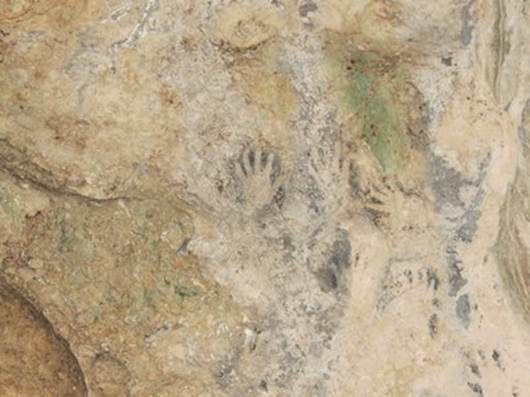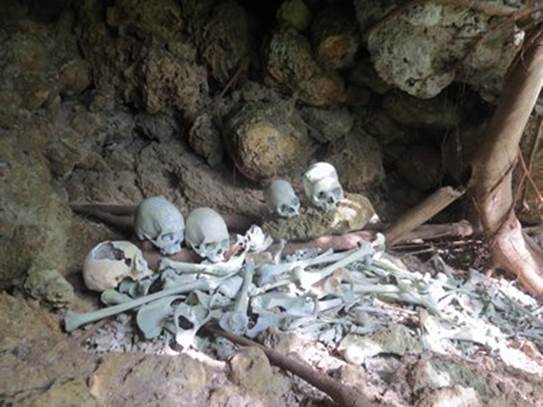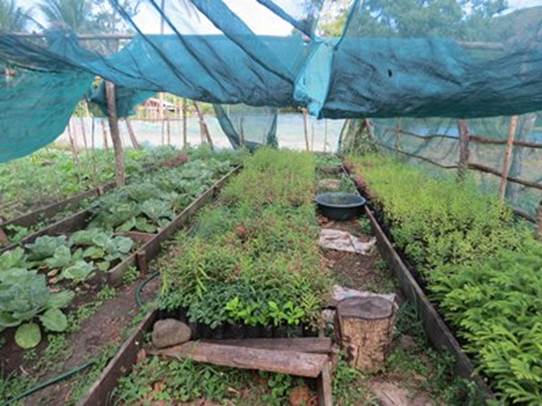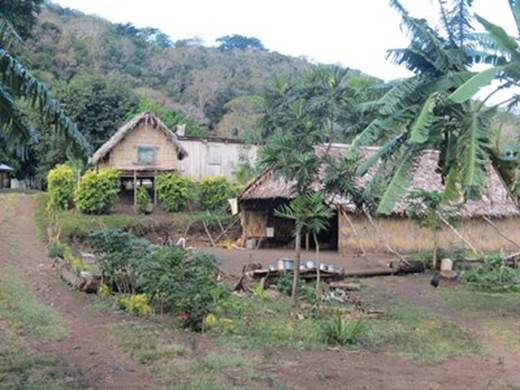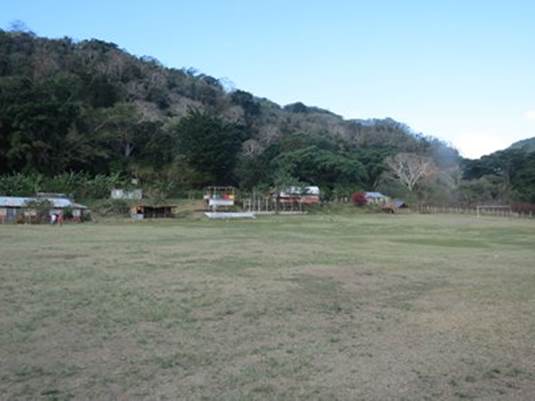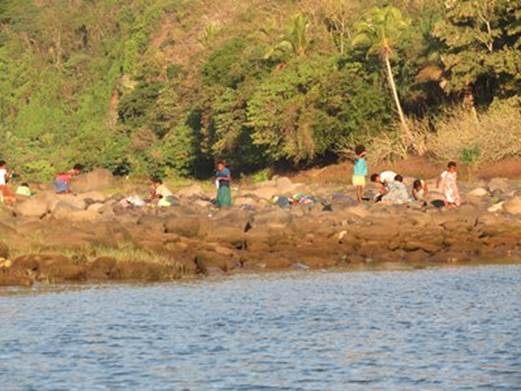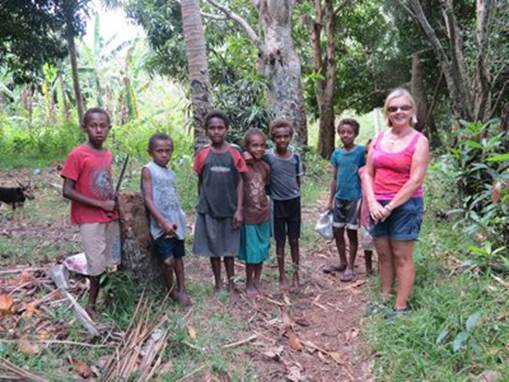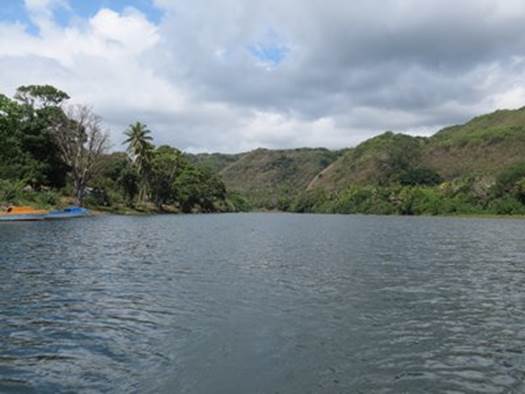Dillons Bay, Erromango

Date Thursday 18 – Friday 19 September 2014 A pictorial record of our visit:
Early on Thursday morning the ship had arrived and the delivery was manhandled into small boats
We had been told that amongst the things being delivered was a large item being brought in by someone who had worked in New Zealand. Not much freeboard there.
This interesting building has taken David six years to build so far. It is surrounded by a beautiful garden, also constructed by David. When complete it is intended to be a club for visiting yachtsmen. David, who had dinner with us on board acted as guide to show us two caves of particular significance in local history
The first cave was used in times gone by as a refuge for the women and children. There were various wall paintings including these hand prints
Another area that we visited was a sacred area used for burial. David said a ritual prayer to ask for permission from the spirits to allow us to approach. The main cave is no longer safe to enter but this cave higher up the cliff reputedly contained the remains of two chiefs and their wives.
Back in the village David showed us one of the nurseries where as well as growing vegetable plants the villagers cultivate sandalwood seedlings as part of a government scheme to reintroduce this heavily depleted species to the forest.
We did not establish purpose of the large open hut in the foreground. It was obviously used for cooking as the large pots drying in the front of it indicated. Possibly it was used for feeding pupils from distant villages that boarded at the school. Cooking is done over open fires.
We visited the school met the head teachers. The school offers pupils the option of being taught in English or French.
The school buildings are spread around the sports field, complete with stand. All of the village children attend the government funded school up to year 6. After that young people can go to the secondary school in Port Villa but only if the families can afford to pay.
Friday was half day at the school and in the afternoon there were groups of youngsters gainfully employed. These girls appeared to have been sent to the river to scour cooking pots
Further up the river these girls, with what appeared to be a supervising adult, were washing clothes in the river
We encountered this group of boys and girls who had been sent off to cut food from the family garden (UK - think allotments). All of the boys were carrying machetes for the task in hand. The attendant dog was keeping a safe distance!
Elizabeth made friends with Mary, seen with son Alex, and had long conversations about all sorts of things from education to birth control. We were able to give Mary some clothes for her three children and some toiletries for her. Note that Alex is wielding the obligatory machete. We were told that they are taught to use them safely at a young age
The village is built on the side of the Williams River named after a Missionary of that name, in the late 19th century, who after ignoring warnings about local religious customs and trespassing on a sacred site was killed and eaten. |

